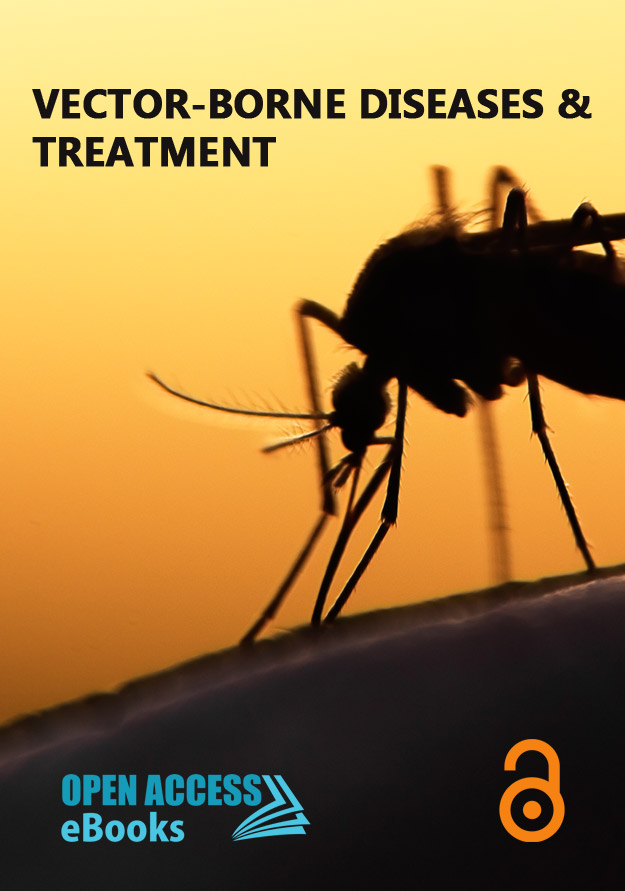List of Chapters
Filariasis: its Manifestations, Epidemiology and Control Strategies
Author(s): Priyanka Rai; Minu Bharati; Dhiraj Saha*
Filariasis is a helminth disease, caused by parasitic worms known as filariae and transmitted through mosquito vectors. Filariasis presents a threat to public health as it causes severe long term disability and hampers one's socio economic status. Filariasis is endemic in many tropical and subtropical regions of the world. Lymphatic filariasis, a major type of the disease alone puts about 120 million people at risk of disease infection. When we trace back the history of the occurrence of this disease, though the first written document is from the Ancient Greek and Roman civilizations [1] yet the confirmation was made only many centuries later in 1877, when Sir Patrick Manson detected microfilaria causative agent of lymphatic Filariasis in mosquitoes. This was the first ever discovery of an arthropod acting as a vector of human diseases which was later found to be the case for other tropical diseases such as malaria, dengue etc. Even though it can affect individuals of all age groups and both genders, it is predominantly found to be associated with people of low socio economic status [2]. Moreover, filarial infection in general has been found to be more common in males than females.
Salient features of Trypanosoma congolense in African Animal Trypanosomiasis in the sub-Saharan Africa
Author(s): Yakob P Nagagi*; Violet Temba; Richard S Silayo; Eliningaya J Kweka
Despite the multiple causes, contribution of Trypanosoma congolense in African Animal Trypanosomosis (AAT) in the sub-Saharan Africa is great. More than 80% of AAT and losses in domestic animals (cattle, goats, sheep, horses, pigs and dogs) in South, East and Central Africa are due to T. congolense infections. In the West, T. congolense remains one of the major causes of AAT in livestock. This chapter discusses the biology and disease caused by T. congolense, challenges and opportunities for control are highlighted.
West Nile Virus: An Emerging and Reemerging Infectious Disease
Author(s): Jyoti S. Kumar*; Paban Kumar Dash; Priyanka Singh Tomar;; Divyanshi Karothia; Manmohan Parida
West Nile Virus (WNV), a flavivirus of the Flaviviridae family, is maintained in nature in an enzootic transmission cycle between birds and ornithophilic mosquito vectors, although the virus rarely infects other vertebrates. WNV causes disease in horses and humans, which develops febrile illness, meningitis, encephalitis and flaccid paralysis. Until recently, its medical and veterinary health concern was relatively low; however, the number, and severity of outbreaks with neurological consequences in humans and horses have increased in European countries and the Mediterranean basin.
Vectorial Control Based on the General Characteristics of Phlebotomine Sand Flies
Author(s): Graziella Borges Alves, MSc; Lilian Aparecida Celebrusco Rodas, PhD; Sandra Valeria Inácio, PhD; Walter Bertequini Nagata, MSc; Tereza Cristina Cardoso Silva, PhD, Katia Denise Saraiva Bresciani, PhD*
Sand flies (Diptera: Psychodidae: Phlebotominae) are vectors insects of zoonotic diseases, caused by protozoa such as Leishmania spp. Leishmaniases are diseases of great global epidemiological importance, endemic in tropical and subtropical areas of the Americas, where they constitute a significant public health problem. In this chapter we will discuss the vector control measures based on the general characteristics of phlebotomine sand flies.
Climatic Variables and Malaria Transmission
Author(s): Mercy Aparna Lingala
Malaria is one of the major vector-borne diseases caused by plasmodium spp. and transmitted to humans by anopheles mosquitoes. Malaria transmission is highly dependent on climatic variables such as temperature, rainfall and relative humidity. Malaria parasite Plasmodium completes its life cycle in two main hosts i.e., mosquito, humans and also in South-East Asian macaques (a natural host of P. knowlesi). It completes its sporogony in anopheles mosquitoes which are poikilothermic and requires ambient temperature to complete their life cycle.
Japanese Encephalitis Virus: Displacing of Virus Genotype and Efficacy of Vaccination
Author(s): Phan Thi Nga*; Do Phuong Loan; Vu Dinh Thiem
Japanese Encephalitis Virus (JEV) is a mosquito-borne virus which causes Acute Encephalitis Syndrome (AES). After more than 60 years since JEV was discovered in Japan in 1935, the virus spread to many Asian countries, Western Pacific countries and North Australia, with approximately over 3 billion individuals lived in epidemic areas in 2011 [2,3,34,36]. JEV is a leading cause of AES for children in Asian countries with a high morbidity and mortality. It was claimed that if there had been no vaccination to prevent human from the disease, its consequence would have been more severe than any other disease. JEV has only one serotype but five genotypes (GI-V).
